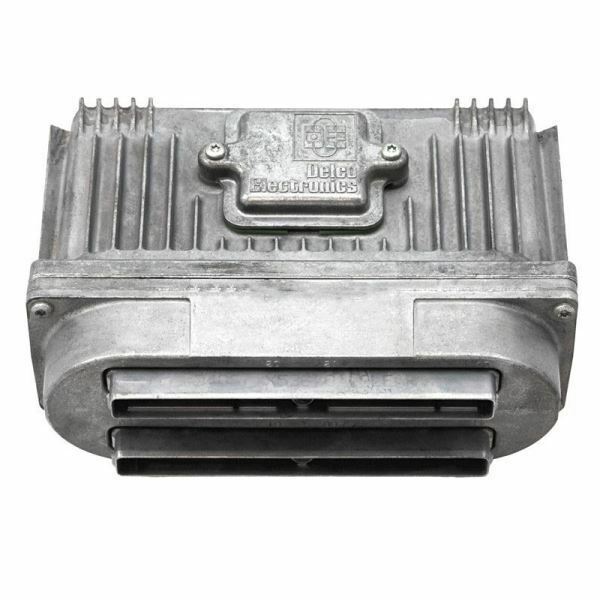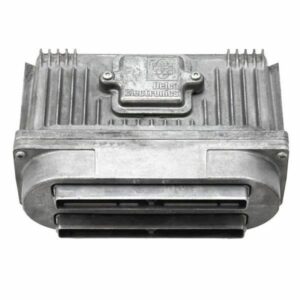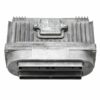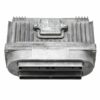Restore Your GM’s Performance with a Reliable Powertrain Control Module
Is your 1997 Grand Prix or another GM vehicle suffering from frustrating issues like stalling, a persistent Check Engine Light, or erratic engine behavior? Before you spend a fortune at the dealership or risk a junkyard part, consider the root cause: a failing Powertrain Control Module (PCM). As the central computer of your vehicle, the PCM governs everything from fuel injection and ignition timing to transmission shifting. When it falters, the symptoms can be widespread and confusing. I’ve spent two decades in the garage, and I can tell you that a faulty PCM is one of the most common culprits behind these phantom electrical gremlins in mid-90s GM cars.
This isn’t just a replacement part; it’s a complete solution. We take a quality, tested PCM and flash it with the latest GM-certified software updates specifically for your vehicle. All you need to do is provide your Vehicle Identification Number (VIN) after your purchase. This critical step ensures that the module communicates perfectly with your car’s engine, transmission, and other systems, just as it did from the factory. A properly programmed 1997 Grand Prix PCM is essential for restoring lost power, improving fuel economy, and ensuring smooth, reliable operation for years to come.
A Technician’s Notebook: The Intermittent No-Start
I remember a 1997 Pontiac Bonneville that came into the shop with a classic head-scratcher. The owner said it would randomly refuse to start, but only after it was warm. No rhyme or reason. We checked the fuel pump, ignition system, and crank sensor—all tested fine. There were no consistent trouble codes, just a few random communication errors. After hours of diagnostics, we hooked up a scope to the PCM’s main power and ground circuits. We discovered that as the module heated up, one of the internal processors would drop out intermittently, cutting off the signal to the fuel injectors. A replacement PCM, programmed to the car’s VIN, solved the problem instantly. It’s a perfect example of how a failing computer can mimic a dozen other mechanical issues.
Common Signs of a Failing PCM
- ✔ Check Engine Light is illuminated, often with internal module codes like P0601, P0602, or P0605.
- ✔ The engine cranks but refuses to start.
- ✔ Unexplained stalling or rough idling, especially when warm.
- ✔ Noticeable decrease in fuel efficiency.
- ✔ Harsh or erratic automatic transmission shifting.
- ✔ Communication errors with diagnostic scan tools.
- ✔ Apparent failure of multiple sensors at once.
A Straightforward Guide to Installation
- ✔ Safety First: Always disconnect the negative terminal from your vehicle’s battery and wait at least 10 minutes for capacitors to discharge.
- ✔ Locate the PCM: On most of these GM models, the PCM is located in the engine bay, often inside the air filter box assembly for protection.
- ✔ Disconnect Connectors: Carefully release the locking tabs on the electrical wiring harnesses and pull them straight out from the module. Avoid pulling on the wires themselves.
- ✔ Remove the Old Module: Unbolt the PCM from its mounting bracket. It’s typically held in by a few 7mm or 10mm bolts.
- ✔ Install the New Module: Seat your new, pre-programmed 1997 Grand Prix PCM into the mounting bracket and secure it. Reconnect the wiring harnesses, ensuring they click firmly into place.
- ✔ Reconnect Battery: Re-attach the negative battery terminal and tighten it securely.
- ✔ Perform Security Relearn: Your vehicle may require a simple key-cycle security relearn procedure to recognize the new PCM. Turn the key to the ‘ON’ position for 10-15 minutes, then ‘OFF’ for 10 seconds. Repeat this two more times. On the fourth attempt, the vehicle should start.
Verified Vehicle Compatibility
This module, part number 16217058, is a direct replacement for part numbers 16217058 and 16218070. It is guaranteed to fit the following 1997 models. Please confirm your engine option when ordering.
– Grand Prix (3.1L V6 & 3.8L V6 non-supercharged)
– Bonneville (3.8L V6 non-supercharged)
– Grand Am (3.1L V6)
– Trans Sport (3.4L V6)
Chevrolet:
– Lumina Car (3.1L V6)
– Monte Carlo (3.1L V6)
– Venture (3.4L V6)
Buick:
– Regal (3.8L V6 non-supercharged)
– LeSabre (3.8L V6)
– Century (3.1L V6)
– Skylark (3.1L V6)
Oldsmobile:
– Eighty Eight (3.8L V6 non-supercharged)
– Cutlass Supreme
– Achieva (3.1L V6)
– Silhouette (3.4L V6)
Choosing this professionally programmed 1997 Grand Prix PCM is the smartest way to get your car back on the road quickly and confidently, without the excessive costs and programming headaches of other options.
Frequently Asked Questions
Frequently Asked Questions
Why do you need my VIN?
Your VIN is essential for us to load the exact, correct GM software for your car’s specific options, engine, and transmission. This ensures perfect compatibility and prevents performance issues.
Is this a plug-and-play part?
Yes, it is. Because we program it before shipping, it arrives ready to install. In most cases, you will only need to perform a simple ‘Security Relearn Procedure’ with your key, which takes about 30 minutes and requires no special tools.
Will this fix my car’s problem?
This module will correct any issues directly caused by a failing PCM. While it solves a wide range of common problems, we always recommend proper diagnostics to confirm the PCM is the faulty component before purchasing.
Does this module fit the supercharged 3.8L engine?
No, this specific part number is for the naturally aspirated (non-supercharged) 3.8L V6 and other specified engines. It is not compatible with the L67 supercharged engine.
What is the difference between a PCM and an ECM?
The terms are often used interchangeably. ECM (Engine Control Module) was an older term. PCM (Powertrain Control Module) became more common as the computer began controlling both the engine and the transmission. For this vehicle, it controls the full powertrain.



